#aquatic reptiles
Explore tagged Tumblr posts
Text
Another Mattel Jurassic World Fossil Fighters repaint. This time it's plesio. Super happy with how this one turned out. I have always loved thr stary design that this particular vivosaur has. As always I hate working with yellows.

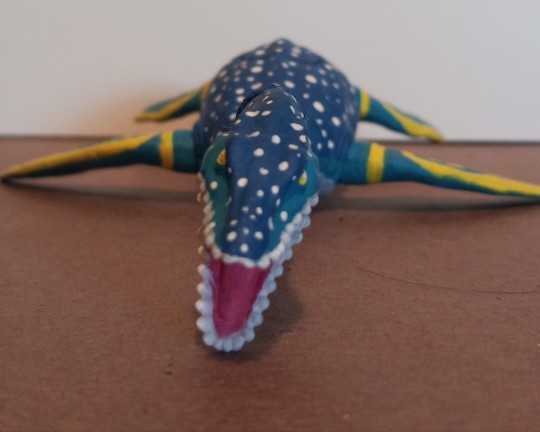
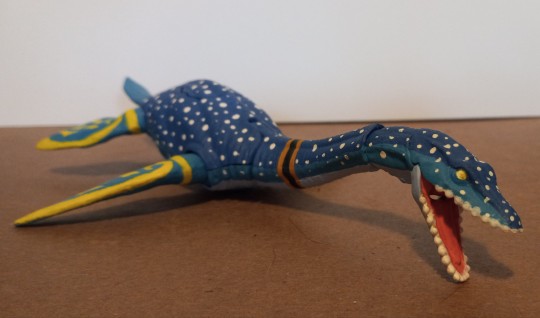
#fossil fighters#fossil fighters champions#repaint#not dinosaurs#reptiles#aquatic reptiles#plesiosaur#vallejo paint#vivosaur#mattel jurassic world#jurassic park#jurassic world#my art
95 notes
·
View notes
Text
Aquatic Reptile Character Poll
Alright so I apologize for not giving enough time on the last poll (I was tired and only gave you all one day as opposed to a week) so I may include another poll at the end. So what kind of aquatic reptile should I write?
@bloobluebloo @standingpillar @doveghost @asordidbarwere @stoneshrike
#poll#furry#furry anthro#scalie#scalie furry#writing#creative writing#writeblr#polls are fun#character poll#reptiles#aquatic reptiles#reptiles are cool#turtles#crocodillian#crocodiles#alligator#caiman#water snakes#basilisk#iguana#monitor
11 notes
·
View notes
Text

Nothosaurus: “I know I have the body but of a strong and swift reptile; but I have the heart and stomach of a fish!👑
🦎🌊
#history#nothosaurus#reptile#jurassic world#jw#camp cretaceous#prehistoric animals#extinct#fossils#paleontology#jurassic world camp cretaceous#jurassic park fan#plesiosaur#triassic#aquatic reptiles#extinct animals#prehistoric#nickys facts
115 notes
·
View notes
Text

This is currently a work in progress. Got to do the shading and delete the underlines. But I may as well ask those paleontologist folks if I did this Liopleurodon correctly. I have never drawn a Pliosauridae or any sort of marine reptile. So I'm wondering if I got this predators proportions correctly. I at least tried to get the teeth count correct. Also I'm assuming clams are old enough to have existed. But please tell me if they didn't, so I can switch it out for something more appropriate.
3 notes
·
View notes
Text


King of clubs
#king of clubs#clubs#spinosaurus#dinosaurs#aquatic reptiles#aquatic animals#prehistoric reptiles#animals#playing card#playing cards
0 notes
Text
The large compound island of New Guinea, and adjacent, tropical areas of Australia, are home to a remarkable turtle species, that is an outlier in at least four ways - its lack of close living relatives, its location, and its locomotion. This is the pig nosed or Fly River softshell turtle, also known as the pitted shell turtle, and Carettochelys insculpta. This curious freshwater turtle is now a common zoo exhibit, and occurs in the pet trade especially as cute juveniles, although it's size and cruising habit, make it problematic as a pet turtle. Fortunately care of C. insculpta is very well understood, and not problematic other than their requirement for living space.
C. insculpta is the only living Catettochelys species that is recognized. Very large individuals of this species reportedly have a carapace length of nearly 60 centimeters, or 24 inches. Yet more commonly they are around 25 centimeters, or 14 inches. In New Guinea this species is found only in the southern lowlands of the island, whereas in Australia it is found in Northern Territory. The exact distribution of C. insculpta is uncertain as regards both New Guinea and Australia, but the species is limited to the tropics.
The size of T. insculpta varies by geographical origin, with those from the Kikori area weighing 10 kilograms more than those from the Daly River. In spite of this, no morphological evidence has been presented to justify supposed subspecies distinctions. The great similarity between New Guinea and Northern Territory Carettochelys turtles, and their limited Australian distribution, indicate they dispersed to Australia from New Guinea at some time during the Quarternary.
Carettochelys are found in rivers and streams with soft bottoms and slow currents. Such habitats are rich in leaf litter and wood debris. They are also present in still water bodies in New Guinea. Hatchling Carettochelys can be found in New Guinea river deltas, but as adults they are migrated upstream. Australian populations do not frequent estuaries at all, and are thus more strictly freshwater. These Australian Catettochelys have more habitat available in the wet season, when they are able to move into nearby creeks, and exploit flooded floodplain environments.
Oftentimes people object that Caretrochelys are not true softshells, on the grounds that they are not members of the trionychid clade, that is named for Trionyx, an African softshell turtle. But Catettochelys is their definite sister, and together with the trionychids, they comprise the clade Trionychia. The first trionychians were already softshells, and the morphological status as softshell is inherited by both Carettochelys and its trionychid sisters.
The presence of a northern type turtle, like Catettochelys, in the Australasian realm is a bit of an enigma. Although there are no longer native carettochelyids in the northern hemisphere today, ancestral carettochelyids during the Eocene epoch, appear to have exclusively inhabited northern continents. Therefore ancestral Catettochelys must have reached island Australasia prior to their extinction in Asia. It is not known when carettochelyids arrived in Australasia, and there is currently only one species.
Some other New Guinea turtles, that are members of the trionychid group, are also of Asian affinities. All other Quarternary turtles in New Guinea and Australia, are either pleurodires or meiolaniids. Both these clades are descended from ancestors that were present since the breakup of Gondwana in the Cretaceous and Early Palaeogene. Northern type turtles in Australasia are much more recent arrivals in Australasia, and they are limited to the northern continental mainlands.
Australia has a well deserved reputation for her unique animal life, having evolved in isolation from those of their inhabited continents. However her isolation has not been total, and as she has been carried north towards Asia by forces below the earth's shallow crust, new kinds of animals have arrived on her shores from Asia, including murid rodents, and agamid and varanid lizards.
Although the biota and ecology of Australasia is distinct from that of Asia today, there is overlap between the animal and plant life of these continents, despite the lack of land connections between the continental masses of 'Sundaland' and 'Sahulland'. In fact the climate is an effective barrier, with drier and more season climates in eastern Indonesia, working with the sea to separate the rainforests on the Sunda shelf from those on New Guinea.
Climate zones within Australia largely limit New Guinean faunal and floral components, which include more Asiatic elements than those of Australia, to the north of Australia. The fauna and flora of which, cannot easily be demarcated apart from those of southern New Guinea. Indeed two land bridges across the present Torres Strait, had connected the island continents during the Pleistocene, during which time the sea levels were lower, allowing migration between what are now discontinuous land masses.
Although Catettochelys is unrelated to Holocene sea turtles, it swims with an unusual motion intermediate between the fore and aft rowing of typical, plesiopodal freshwater turtles, such as the red eared slider, and hydropodal sea turtles that swim by employing vertical strokes, or underwater flight. Like the sea turtles, Catettochelys makes more use of its deltoideus muscle in its swimming stroke, creating better forces of lift that facilitate pelagic abilities.
These turtles are quite catholic omnivores, consuming both plant and animal food resources, but their feeding habits become increasingly vegetarian as they mature. They feed extensively on tropical fruits such as Ficus, Sonneratia, and Nypa, that fall into the water where Carettochelys feed, and they also consume a broader diversity of waterside and aquatic plant material, such as the eelgrass Valisneria and algae.
Their aquarium diet should therefore include algae wafers and fresh fruits and vegetables, such as banana, melon, and lettuce. Dried preparations can be fed to these turtles, but it is much preferable to choose those with a rather low protein content. Usually they prefer to eat at the bottom so sinking pellets are a better choice than floating sticks. They will also readily eat defrosted and fresh meaty items. Respecting their omnivory, their diet should be varied and its vegetable component should make up about 2/3 of the diet of adult Carettochelys.
The animal prey that are consumed by Carettochelys are benthic and slow moving, including snails and crayfishes. Therefore these turtles are not suited for sharing an environment with hard shelled potential prey. They are also likely also to consume some aquarium plants. Vertebrates are said only to be eaten as carrion, but opportunistic predation on small, slow or sleeping fish cannot be excluded, because this is normal benthivorous turtle behavior.
Although they are active and efficient midwater swimmers, Carettochelys are foragers and not hunters. Fishes that are significantly larger than their heads will be safe. This species is also peaceable towards other turtles, and is often housed in zoos alongside Australasian pleurodires, of the genera Chelodina, Elseya, and Emydura. Indeed Catettochelys is by now a very popular species in mixed species exhibits, having a good tolerance of other animals, and being much easier to accommodate than are marine turtles.
Im spite of this overall good tolerance, Carettochelys males can actually be aggressive to one another, and in horny condition can harass females with tail biting behavior. Rarely males can be aggressive towards other turtle species, and even fish sharing their environment, but this is a statistical tail end effect, and cannot be considered typical. Usually it is sufficient not to cohabit two males together.
The morphology of the Catettochelys humerus is most similar to that of the trionychids, yet it's shape is convergent upon that of sea turtles. Overall the forelimbs are more efficient hydrofoils than is normal for a freshwater turtle, although they still walk and swim using an alternate coordination of all four limbs, despite being well capable of a graceful, penguin-like underwater flight using the forelimbs alone.
Compared to the trionychid sister clade, Catettochelys possesses elongated autopodia, making the forelimb a functioning underwater 'wing'. This elongation is already described in the extinct, northern hemisphere carettochelyids, but it is thought to be unique among all of the non-marine turtles. The swimming style of Carettochelys gives it an advantage when competing against pleurodire turtles, because it is useful for finding food in low energy environments. The mystery is why no turtles swim like this today, in the tropical rivers of the Congo, Amazonia, or Southeast Asia.
Catettochelys even possesses salt glands, but they are degenerated, like those of the gharial Gavialis, a riverine crocodilian descended from marine ancestors. However it is not resident in brackish environments as an adult, and should be regarded as a truly freshwater turtle. This species visits estuaries only to nest on sandbanks, before returning upstream as they grow. Some Carettochelys juveniles reside in brackish water with salinities up to 21 ppt, or a specific gravity of 1.015.
Often animals and plants that outlive their relatives, in the sense of the geological timescale, have shifted to novel environments. Like the gharial, and the South Asian, Chinese, and Amazon river 'dolphins', of middle Cenozoic origins, Carettochelys appears to represent the phenomenon of atypical, freshwater subclades surviving longer that their marine cousins.
Depending on the location and the time of the year, Carettochelys in the wild may experience an approximate spectrum of pH from 6.5 to 8.5, although the average pH in the river channels is surely 7 to 8. During the wet months, when Catettochelys make use of flooding to access the floodplain, the water pH is lower, despite the strange but widely circulated claim online, that Catettochelys requires hard, alkaline water parameters.
The water temperature in river channel environments is in the middle and upper 20s degrees centigrade. In floodplain habitats the temperature may seasonally reach the upper 30s. If they are maintained at brackish salinities, which is not necessary, the specific gravity should not reach 1.02, and they will still need to drink freshwater, as do marine snakes and birds with functioning salt glands, that still drink rainwater.
#Carettochelys insculpta#pig nosed softshell turtle#pig nosed turtle#Fly River softshell turtle#Fly River turtle#pitted shell turtle#aquatic reptiles#aquatic turtles#tankbusters#freshwater turtles
0 notes
Text

Makuta Spleco
He took the name Silver Fish literally.
Source
Creator: DerpSpawn
#lego#bionicle#armor#armor plates#makuta#brotherhood of makuta#living#living armor#darkness#shadow#shadow demon#amphibian#silver#metal#metallic#reptile#reptillian#amphibious#fish#aquatic#tail#long#ling tail#fish tail#fins
205 notes
·
View notes
Link

If you click on the image it gives you the full illustration but that cropped thumbnail is hilarious
Along with other recent finds from Africa, it suggests that mosasaurs and other marine reptiles were evolving rapidly up until 66 million years ago, when they were wiped out by an asteroid along with the dinosaurs and around 90% of all species on Earth.
The new species, Stelladens mysteriosus, comes from the Late Cretaceous of Morocco and was around twice the size of a dolphin.
It had a unique tooth arrangement with blade-like ridges running down the teeth, arranged in a star-shaped pattern, reminiscent of a cross-head screwdriver.
Most mosasaurs had two bladelike, serrated ridges on the front and back of the tooth to help cut prey, however Stelladens had anywhere from four to six of these blades running down the tooth.
“It’s a surprise,” said Dr. Nick Longrich from the Milner Center for Evolution at the University of Bath, who led the study. “It’s not like any mosasaur, or any reptile, even any vertebrate we’ve seen before.”
Continue Reading
774 notes
·
View notes
Text

By the sea. //ft @dakotas-world2!
🌊🐢🌞🔥
#my art#i wanted to draw more of her#cute girl heheh blushes#art#digital art#furry#oc#anthro#fursona#illustration#turtle#scalie#sea turtle#aquatic#reptile#beach#vibes#warm#soft#art for others
513 notes
·
View notes
Text
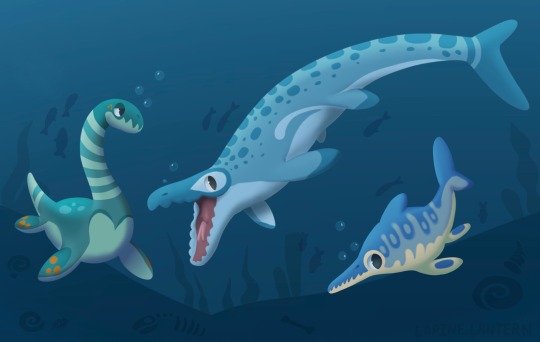
Been playing paleo pines and I WANNA WORK FOR THE CREATORS ITS SO CUTE
#paleo pines#paleoart#paleo concept#character design#dinosaur#lapine lantern#my art#icthyosaur#mosasaurus#plesiosaur#aquatic reptiles appreciation#prehistoric zoology
628 notes
·
View notes
Text
Wet Beast Wednesday: saltwater crocodile
66 million years ago, reptiles ruled the planet, being the largest, most efficient, and most dominant animals. Then a big space rock ruined that and cleared the way for the mammals to take over. Not all reptiles have forgotten their glory days and there are places where they still rule. Meet the saltwater crocodile, the largest and most dangerous reptile in the world and a reminder of their glory days.

(Image: a saltwater crocodile basking in the sun. It is a large reptile with short legs and a large, angular head with massive jaws lined with conical teeth. It has a long tail and its back and tail are lined with rows of scutes. It is a very dark green, almost black, in color. Its mouth is slightly open. End ID)
Crocodylus porosus is the largest crocodilian and largest reptile alive today. They are sexually dimorphic, with the males growing much larger than females. Most males are between 4 and 4.5 meters (13'1" to 14'9") and 408 to 770 kg (899 to 1698 lbs), but they can grow larger in optimal conditions. The largest specimen on record was found dead and estimated to be 6.3 m (20'8") while alive. The largest captive crocodile was named Lolong and weighed in at 6.17 m (20'3") and 1075 kg (2370 lbs). Females typically reach up to 3.4 m (11'2") and 200 kg (440 lbs), with the largest on record being 4.3 m (14'1"). Saltwater crocodiles have the greatest size difference between sexes of any crocodilian and it is thought that this is due to males needing to control a large territory. Saltwater crocodiles, like other crocodilians, are large, amphibious reptiles with large, long jaws and powerful tails that are used to propel them while swimming. Their bodies are covered with scales and scutes, though they have relatively few of the latter compared to other crocodiles. Their heads and bodies are broader than in most crocodiles, leading to an early misidentification of them as a species of alligator.

(Image: a close-up of the head of a saltwater crocodile, showing how high its eyes and nostrils are and its rough, scaly skin. A small leaf had landed in its snout. End ID)
Saltwater crocodiles have a wide historical distribution stretching from eastern India, north to China and Japan, and throughout the Indo-Pacific and Australasia. Overhunting has led to their range being reduced, with many isolated populations. The largest and most stable population is now in northern Australia. They occupy coastal regions and rivers, including mangrove swamps and estuaries. While other crocodile species can tolerate saltwater, only the saltwater crocodile regularly inhabits it. Their ability to tolerate saltwater has helped them get such a large range. The crocodiles can swim out to sea and let ocean currents carry them to new habitats. Tagging and observation has shown that they are powerful swimmers who can venture over 500 km out to sea, they spend most of their time in the ocean simply waiting to be carried to new feeding ground. Those traveling by ocean will occasionally return to land to warm up and wait for the currents to change. Ocean trips can last so long that barnacles can start to grow on their hides. Saltwater crocodiles spend more time in the water than any other crocodile species, but they must return to land to bask in the sun and raise their temperatures. As with other crocodilians, they often bask with their mouths open. The open mouth helps regulate their body temperature. Saltwater crocodiles are typically more active than most other species and spend a lot of their non-basking hours swimming in search of food or to patrol their territory.

(Image: a saltwater crocodile swimming underwater. Its body is skinny when viewed from the side. From this angle, its lighter underbelly is partially visible. End ID)
Saltwater crocodiles are opportunistic predators that will eat just about anything. Juveniles are restricted by their size and feed on fish, crustaceans, molluscs, birds, and small mammals. As they grow, their diet expands to larger animals such as dingos, emus, deer, boars, and primates. The larger males can take prey as large as water buffalo. Even the largest male will still take small food if the opportunity arises and they have shown some resistance to the poison of the highly invasive cane toad. As with other crocodilians, saltwater crocodiles are ambush predators. They tend to sit very still, allowing them to be mistaken for sunken logs and their eyes and nostrils are high on their heads, letting them keep most of their bodies submerged. When prey comes along, they will attack with their powerful jaws. Saltwater crocodiles have the most powerful bite force of any living animal and their teeth can be up to 13 cm (5 in) long. Prey not killed by the initial bite will be dragged into the water. Crocodiles practice the death roll, a habit of spinning themselves around while biting onto prey to dismember it. Food can be dragged underwater and stored until it starts to rot to make eating easier. Saltwater crocodiles have also been known to jump vertically out of the water to attempt to catch flying prey like birds and bats. They also also been known to use these leaps to try to knock monkeys and gibbons off of overhanging branches and into the water. While out at sea, the crocodiles will feed on marine animals as large as dugongs and sharks. Saltwater crocodiles, especially males, are highly territorial and will fight to defend their feeding grounds. Because of their slow metabolism and lethargic lifestyle, crocs can go months between meals.

(Image: a saltwater crocodile launching itself vertically out of the water to attempt to grab food that is being dangled above it. The front half of its body is sticking out of murky water and its mouth is wide open. End ID)
Saltwater crocodiles mate during the wet season, when temperatures and water levels are rising. Females will select the nesting site, which is usually a stretch of muddy shoreline. She then lays her eggs in an excavated pit and buries them under a mound of soil and vegetation that helps keep them warm. The clutch usually numbers 40 to 60 eggs, but can reach up to 90. The mother will remain near the nest until hatching, which can be over 100 days. When they young are close to hatching, they will emit yelping cried that triggers the mother to dig them out and even help hatch them by gently manipulating the eggs in her mouth. Once hatched, she will carry her young to the water and remain with them for around 8 months as they grow. Despite the protection of the mother, the eggs and juveniles are highly vulnerable to flooding and predation and only 1% of laid eggs will reach adulthood. Once they reach about 2 and a half years, the juveniles will begin to display territorial behavior and will stop associating with other members of their species. Females reach sexual maturity at around 12-14 years and males around age 16. They have a very long lifespan, with reports of crocodiles reaching ages of 70 and older. Most mature females will mate one a year and they do not show mate fidelity.

(Image: a juvenile saltwater crocodile basking on a log. It share the body shape of an adult, but its scales are a light, sandy color with dark patched. Its mouth is open. End ID)
Saltwater crocodiles are considered least concern for global extinction, but they are vulnerable to local extinction in many parts of their range. Habitat loss and poaching are major threats to them. Saltwater crocodiles are hunted for their meat, eggs, and skin, and poaching in a problem in large parts of their range. The most stable population exists in northern Australia due in part to conservation efforts and populations of feral goats, pigs, and buffalo that serve as a plentiful food source. Saltwater crocodiles are one of the few crocodiles that will eat humans. In fact, they are the species most likely to treat humans as prey. Their size and ambush tactics make them highly dangerous when attacking and they are likely to treat people entering their territory as threats. Males are more likely to be dangerous than females. Relocating problem crocodiles is generally ineffective s they or another crocodile usually find they way back to the now empty territory. The best way to avoid attacks is to stay out of their territory. In Australia, warning signs around crocodile habitat have been shown to be effective at reducing attacks. There are an average of 2 fatalities a year in Australia and attacks in other countries usually go under reported. Negative public opinion of the crocodiles has hampered conservation efforts as they are often attacked in revenge killings.

(Image: a saltwater crocodile basking with a radio tag attached to its back, the antenna sticking up. In the background is famous animal conservationist Steve Erwin, laying down in the water and looking toward the camera. End ID0
#wet beast wednesday#saltwater crocodile#crocodile#crocodilian#reptile#reptiles#aquatic#freshwater#saltwater#estuary#australia#biology#zoology#ecology#herpetology#nature#animal facts#informative#educational#image described
73 notes
·
View notes
Text
“Why did you pick a turtle?”
“Okay but a turtle tho? That’s gotta be embarrassing”
“I though you could only be a fox or a wolf but a TURTLE??”
“So you want to have slimy skin instead of fur? That’s actually gross”
All of these things were said to me by other alterhumans
#there’s alterhumans that are bugs reptiles fish and things that aren’t fluffy and cute#that doesn’t make our identity fake or something ‘gross’#we’re all gross freaks to the outside world#otherkin#therian#otherkinity#alterhuman#nonhuman#alterhumanity#otherkin community#aquatic kin#turtle therian
137 notes
·
View notes
Text
Flocking doodles!
Qianzhousaurus eating hot chip and lie
Yezoteuthis catching a baby mosasaur
Shastasaurus trying to break the shell of an ammonite
Ptychodus showing off it's weird ass teeth
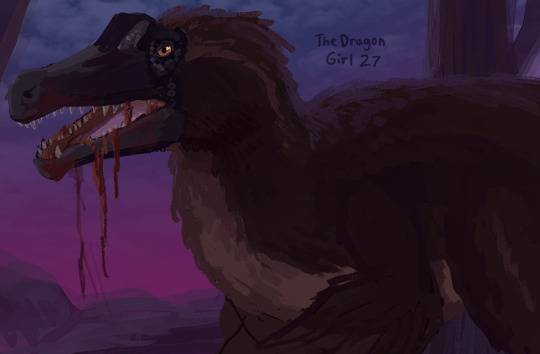
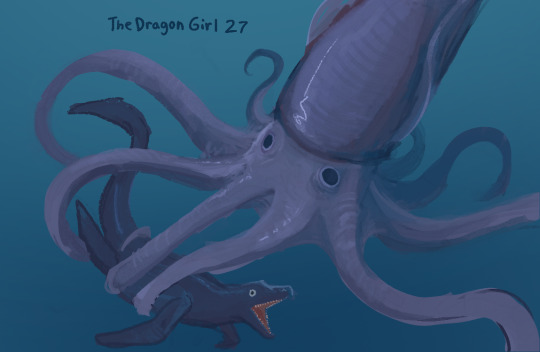
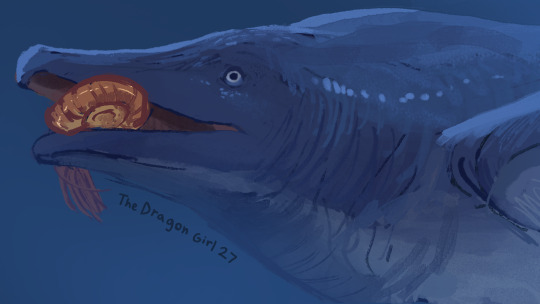
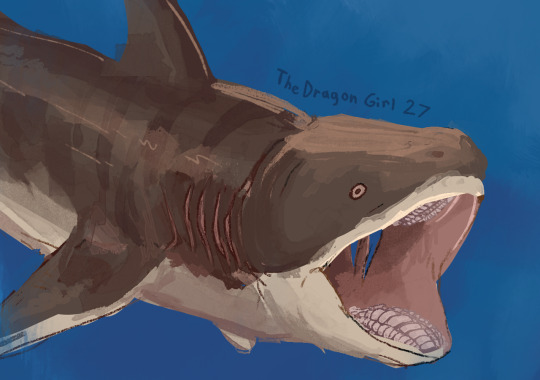
#paleoart#paleostream#Qianzhousaurus#theropod#dinosaur#Yezoteuthis#cephalopod#Shastasaurus#Ichthyosaur#reptile#Ptychodus#shark#fish#dragon draws creatures#lots of aquatic things this week#i learned today i have no idea how to draw squids#any Theropod born after Cretaceous can’t cook… all they know is mcdonald’s charge they phone be bisexual eat hot chip & lie#yes the bisexual lighting on the Qianzhousaurus was intentional i think it turned out very nice
187 notes
·
View notes
Text

[CM] Leilias the Aquatic Dragon
Sketch Page Commission for ZoniRamboni
Curious character, fun to do! First part of the commission I've got with this person, the next post is another OC!
#digital art#digital drawing#original character#oc#dragon#aquatic dragon#aquatic#lizard#reptile#anthro#anthro furry#anthropomorphic#scalie#commission#commission art#art commission#commission work#commissioned art#commissioned work#commissioned piece#funny#silly#doodles#sketch#sketches
35 notes
·
View notes
Text

pov you check the lab at 3 am
A redraw of an olddd character of mine, because I could never draw her properly for whatever reason and I finally did this time.
Love her to death, her name is Suri and she's a workaholic researcher that temporarily fostered Darkey when she was little :) (the lil mug is from her, she held onto it)
#my art#digital art#oc#anthro#original character#scalie#furry art#artists on tumblr#oc art#amphibious#aquatic#reptile
55 notes
·
View notes
Text
Although it is surely not the most world famous snake, Erpeton tentaculatum, the tentacled snake of Southeast Asia, is the most visually and behaviorally identifiable. The most obvious features of the tentacled snake are its namesake, paired facial structures of a sensory nature. E. tentaculatum is the only recognized species in the genus Erpeton, which is furthermore very unusual for its remarkably high degree of aquatic specializations, despite its being a non-marine tetrapod. Its sensory adaptations to life underwater have parallels in the two clades of elapid sea snakes, but Erpeton takes them to a further extreme. E. tentaculatum grows up to 50 to 90 centimeters, or 20 to 36 inches.
Although Erpeton possesses venom, it is not at all dangerous to man, and its venom glands are in fact small and poorly developed, relative to those of related, amphibious snakes. When E. tentaculatum are handled, their response is not to bite in self-defence, but rather to stiffen themselves and, presumably, attempt to mimic a piece of stiff, dead wood. They also maintain a curiously rather stiff posture as they wait for prey. This serves to avoid being detected themselves as they lurk hungrily.
Wild, E. tentaculatum inhabits ponds, lakes, ditches, rice paddies, and other stagnant to slow moving waters. Murkiness of the water is preferred by this slow moving ambush predator, and ideal habitats for this snake also feature substantial amounts of emergent or submergent vegetation. These offer E. tentaculatum good camouflage, as it mimics the motion of the plants in the water. Some of the habitats where E. tentaculatum is found are mildly brackish, however this snake cannot efficiently excrete excess salt, unlike some of its relatives, and it is thus a freshwater species that should not be housed in brackish conditions, without access to freshwater for drinking.
Erpeton is currently a monotypic genus, but nests within a clade of mostly semi-aquatic Asian snakes, named the homalopsid or mud snakes. Specifically, Erpeton is closely related to the fellow homalopsid genera, Enhydris, Cerberus and Homalopsis. E. tentaculatum takes aquatic specialisations to such an extreme, that it is virtually unable to slither when it is placed out of the water, which is more typical of marine than of freshwater snakes. Like seahorses, E. tentaculatum is able to anchor itself to submerged objects, using its prehensile tail, something that is quite a rarity among aquatic vertebrates, and expected more of an arboreal reptile than an aquatic one.
E. tentaculatum has unusual feeding behaviors, that are enabled by the most visually striking attribute of this snake, the paired facial structure. The species in the wild has a habitat preference for strongly discolored water, with poor visibility. Where the water is less turbid than is the optimum for their hunting, they are more nocturnal, although they are capable of hunting by eyesight during the day, using their dorsally oriented eyes. Whereas the facial tentacles are highly sensitive to the water movements that cue this snake to strike laterally, rather than frontally, and only at very close range, an enhanced sensory perception giving it an advantage over other fish-eating snakes. Sea snakes, sea kraits, and file snakes also have adaptations allowing enhanced mechanosensory perception underwater.
Captive observation does not bear out claims, that E. tentaculatum consumes adult frogs or aquatic plants, although the latter claim, however counterintuitive it might be, is still repeated in media sources of herpetocultural, aquarist, and even zoological natures. It is indeed difficult to see how this snake might consume them, considering its morphological specialisation, to swallowing only objects of only certain shapes and sizes. Any ingestion of algae or macrophytes by Erpeton, appears to be purely accidental. Erpeton also allows algae to grow on its body, contributing to the camouflage of the hunter, which may be how the snake can approach prey undetected, when it is present in less turbid waters where light more easily penetrates.
Erpeton tentaculatum have a reputation as difficult to keep in aquaria, for the reason that their striking response is triggered by the motion of a fish performing what is called a 'C-start' - a motion of darting away as soon as it senses the predator. Thus E. tentaculatum are said to need live prey, and of only a certain size. Contrary to popular ideas about tentacled snakes, E. tentaculatum can learn to accept captive diets of small, defrosted fish, as at Chester Zoo. When trying to train them, it helps to simulate the 'C-start' motion of a terrified prey fish, by moving a defrosted food item, as one would when training ribbon eels, which have a similar instinct to strike at fish as they prepare to escape.
The positive side to the strange specialization of E. tentaculatum, is that a great many fish species are large enough to be cohabited safely, with this perplexing snake species. Sadly E. tentaculatum succumbs readily, in home and public aquaria, to fungal and bacterial infections. Tannins in the aquarium water assist in preventing such infections. In the shallows of Tonle Sap, a silty lake where E. tentaculatum flourishes, the pH is probably around 5 to 7.5. At Tonle Sap throughout the year, the water temperature is 22 to 30 degrees centigrade.
Because of its habit of clinging to available items, E. tentaculatum requires elements in the aquascape that it may conveniently grasp with its tail alone. Tall growing, living plants are very appreciated and will allow the snakes to anchor themselves to form an inverted, 'J-shaped' body posture. Because E. tentaculatum is a truly aquatic tetrapod, it does not need, and will not be able to use, any terrestrial portion of an aquaterrarium setup. There is also no point in providing a basking light, and the substrate at the bottom of the aquarium is unimportant.
1 note
·
View note